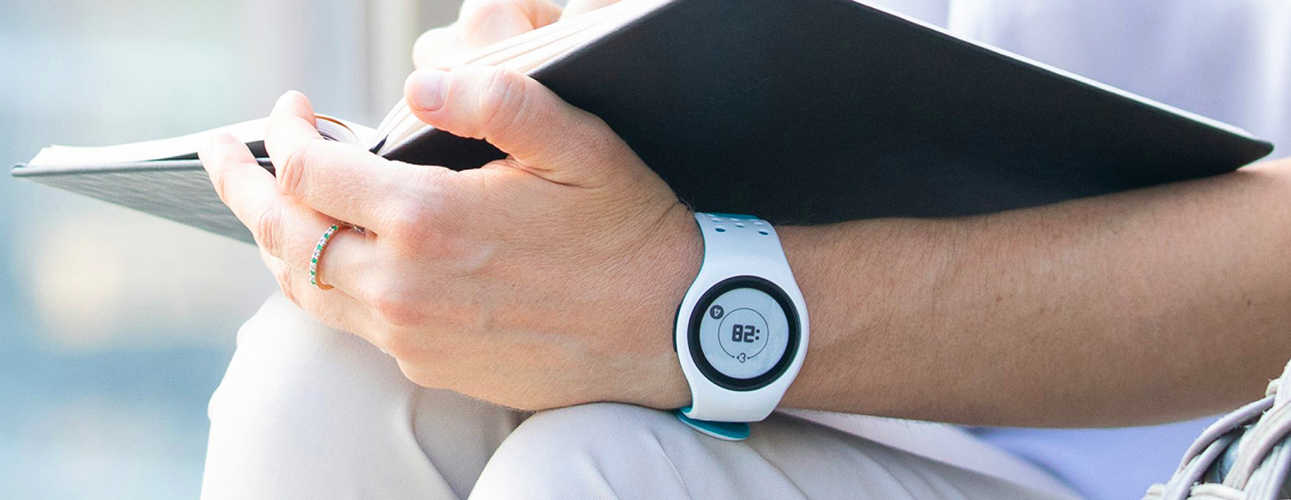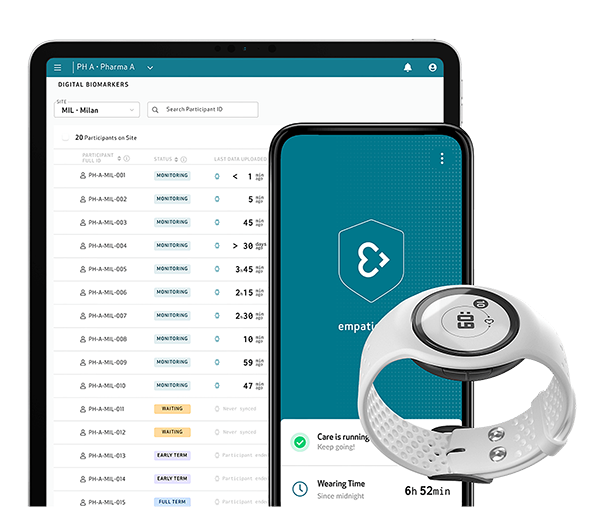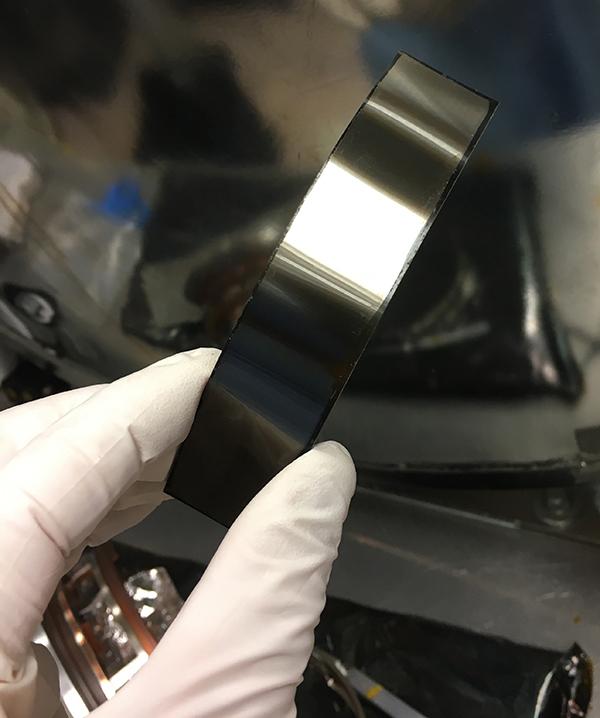
Medical-Grade Smartwatch Can Monitor Astronauts, Patients
Subheadline
NASA-backed consortium helped develop device for clinical trials, academic research, outpatient monitoring
Life for astronauts on the International Space Station has been, for the most part, less taxing than it was in the space shuttle days, when missions often included many goals and milestones compressed into a short period of time. That won’t be the case, however, for the first astronauts to journey to the surface of the Moon during the Artemis program, said Alexandra Whitmire, a NASA scientist whose job concerns astronaut well-being and performance.
“Artemis missions will be very ambitious, with crews having to conduct many tasks, sometimes across extended work hours or overnight shifts,” she said. “Their schedules will likely be disruptive to sleep patterns, similar to what we experienced in the shuttle days.” As a science manager for the Human Factors and Behavioral Performance element of NASA’s Human Research Program, Whitmire is looking for the best ways to monitor and support astronauts’ sleep to help ensure their safety and performance. And hers is just one of five elements in the Human Research Program at NASA’s Johnson Space Center in Houston. Others have concerns like astronauts’ exercise and medical needs and guarding their health against hazards of the space environment, such as radiation.
Most of the program’s efforts could benefit from a wearable device capable of measuring and providing feedback on astronauts’ physiology in a variety of ways. That’s why, in 2020, Whitmire found herself presented with the latest work from medical wearable technology company Empatica Inc. of Cambridge, Massachusetts. With help from NASA and an eye toward the agency’s needs, the company had developed a smartwatch that packed five sensors into a small, comfortable, attractive design, which is now commercially available as the EmbracePlus.
Development of the device’s prototype was funded in part by a grant from the Translational Research Institute for Space Health (TRISH), a research consortium that looks for ways to reduce risks to astronauts on long missions. TRISH is funded by Johnson and Baylor College of Medicine.
Combining Electronic Brains and Beauty
Empatica had previously commercialized a science-grade smartwatch known as the E4, mainly for use in academic research and clinical studies, as well as a smartwatch for detecting epileptic seizures to alert caregivers, called the Embrace2, which was designed to be attractive and comfortable for daily use. For the EmbracePlus, the company wanted to combine the pleasing look and feel of the Embrace2 with the capabilities of the E4. These included an accelerometer to detect movement, a temperature sensor, an infrared sensor that monitors cardiac and respiratory activity, and another that detects electrical activity in the skin, which correlates to nervous system activity. The EmbracePlus also adds a gyroscope for more refined movement detection.
“EmbracePlus combines the beautiful design of Embrace2 with the data-collection capabilities of the E4, so it’s a medical device with a consumer look and feel, which can be easily worn in everyday life,” said Simone Tognetti, chief technology officer at Empatica.
The development carried out with the help of TRISH funding included evaluating different sensors for detecting heart rate and oxygen flow, running trials on critical features, integrating all the components and design elements, determining the most comfortable form factor, and choosing a display, among other work.
“The funding allowed us to implement important engineering features, such as placing the electrodermal activity sensors on a comfortable, removable strap,” said Tognetti, referring to the sensors for electrical activity in the skin. “This was the result of much R&D into the manufacturing, electrical connection, and signal-quality implications of various constructions.”
The Human Research Program’s need for a device to be used by astronauts in space and even in studies on the ground also shaped the watches. Whitmire noted that a small, lightweight, comfortable design is essential to the space program. “You really need a device that is not obtrusive, that is not burdensome, so it’s not causing a stressor in and of itself,” she said.
Tognetti said NASA also required the technology to be energy-efficient, easy to use, and robust enough to work in the harsh space environment. “We have customizable hardware modes to optimize data collection with battery life, a built-in memory that can store up to 55 days’ worth of data in case of low connectivity, and a low-power display that also helps with troubleshooting,” he said. Meanwhile, the device automatically and continuously collects data and streams it via Bluetooth to its companion app, which pushes it to the cloud. “All the user needs to do is make sure the device is charged and connected,” he said, noting that the app will also remind users of even these steps.
Researchers Embrace New Wearable
EmbracePlus went into mass production in 2021. It’s already been cleared by the U.S. Food and Drug Administration as a key component of the Empatica Health Monitoring Platform. Tognetti described it as a platform where machine learning algorithms can analyze simultaneous data streams from different types of sensors to detect and monitor various aspects of health. EmbracePlus sensor data can be combined in new ways to identify different conditions. For example, during the COVID-19 pandemic, the company developed an algorithm to detect a respiratory infection before symptoms presented.
“The wearable is already being used in large-scale clinical trials and in academic research,” said Tognetti, noting that customers include some of the largest pharmaceutical companies and major research projects around the world. Among the latter are two European Union-funded initiatives – the Sleep Revolution project, which seeks to use machine learning to diagnose and treat sleep apnea, and the TIMESPAN project, which is looking at the intersection of attention deficit hyperactivity disorder and conditions like diabetes and cardiovascular disease, with the hope of optimizing and personalizing treatments.
For research and clinical trials, he said, “being able to get gold-standard measurements from participants’ homes or their offices without relying 100% on self-reporting, or on weekly site visits that provide only snapshot metrics, means more high-quality data and a much lower participant burden.”
In the future, Tognetti said, the company also wants the Empatica Health Monitoring Platform, including the EmbracePlus, to be “the go-to tool” for monitoring patient health outside of clinics.
Back at Johnson Space Center, Whitmire said the EmbracePlus is one of the devices under consideration for measuring vital signs and sleep-wake activity in spaceflight and ground research. It’s the device’s accelerometer, which can be used to identify sleep-wake cycles, that mostly interests her group, but she noted that some of the other sensors could be of interest to other elements of the Human Research Program. The wrist-worn device astronauts have been using to collect data is going out of production, and she said the EmbracePlus could address some of the limitations of the previous device, including comfort and connectivity, especially given that the other device doesn’t stream data in real time.
For monitoring sleep, Whitmire said she thinks a device like the EmbracePlus could also find applications outside the medical field. She noted that trucking, railway, and other industries have fatigue-management systems that rely largely on self-reporting. “There’s established research that shows we underestimate the effects of sleep deprivation on our performance,” she said. “I see these kinds of devices and, yes, they’re important for research, but in an applied setting, their ability to provide objective feedback has the potential to improve safety across many industries and to promote taking care of people who work extended hours or overnight shifts.”

The EmbracePlus automatically and continuously collects data and streams it via Bluetooth to its companion app as part of the Empatica Health Monitoring Platform. Credit: Empatica Inc.

Developed with funding from a NASA-backed consortium, the EmbracePlus combines medical-grade capabilities and precision with the look, feel, and comfort of a consumer product. Credit: Empatica Inc.













